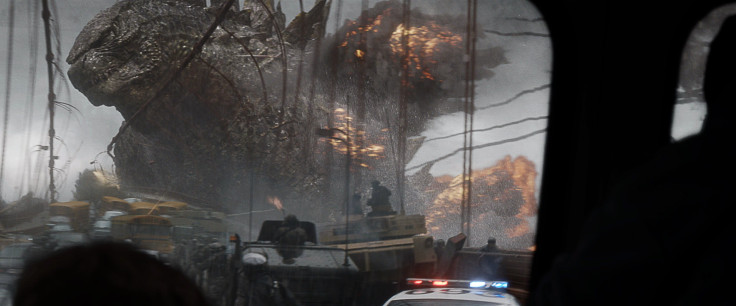Selling 'Godzilla': Japanese Trailer Recalls Past Mistakes, Promises To Do Better

Now that the “Godzilla” movie franchise has been taken over by Warner Bros. and Legendary Pictures, these American studios are in the awkward position of selling one of Japan’s most popular cultural exports back to Japanese audiences.
In the past, Hollywood’s take on Godzilla has not always been well-received. The last time Americans got their hands on Godzilla, via Roland Emmerich and Tri-Star Studios’s “Godzilla” in 1998, the movie received a lukewarm response in U.S. but was outright reviled in Japan. Japanese audiences were disappointed enough that the iguana-inspired American Godzilla bore so little resemblance to the original monster that six years after distributing the film, Toho officially renamed the American creature Zilla, claiming Emmerich “took the God out of Godzilla.”
Legendary must assure Japanese audiences that its version of Godzilla won’t embarrass the character’s legacy first by convincing viewers them that this year's Godzilla is faithful to the original monster, and second by demonstrating that Godzilla is portrayed as a terrifying force of nature come to haunt mankind for its hubris -- critical areas where American adaptations have failed in the past.
“Godzilla” doesn’t open in Japan until July 25, but Toho, which produced the original Godzilla films and is distributing the 2014 installment in Japan, began campaigning in April with posters, trailers and TV spots.
The film’s Japanese trailer sends a clear message that Warner Bros. has learned from Tri-Star’s mistakes, and seems specifically tailored to address the Japanese audience’s skepticism about the film.
While the American trailer mostly shows destruction of San Francisco and Las Vegas, the beginning of the Japanese trailer shows a nuclear research station outside of Mount Fuji collapsing, and proves that Legendary’s monster closely resembles the original Godzilla. Japanese-born star Ken Watanabe figures heavily in the trailer, and he establishes Godzilla being awakened through nuclear testing in 1954, an nod to the original Japanese “Godzilla” released that year.
The Japanese trailer also displays Toho’s logo prominently at the very beginning, which can be interpreted as a seal of approval from the monster’s creator.
Other Asian promos for “Godzilla” take a similar approach. An extended look at the film in Hong Kong markets starts out with a long look at the Japanese plant before cutting to a disaster scene in Hawaii, again promoting the number of scenes set in Asia and Polynesia.
The worldwide trailer does exactly the opposite. Set for use outside of American and Asian markets, it avoids showing immediately recognizable city skylines or locales, except for one brief shot of a ruined Statue of Liberty replica in Las Vegas. In the generic international trailer, Godzilla could be attacking anywhere close to water.
Beyond the market-specific customizations, all versions of the “Godzilla” trailer share large amounts of footage in common -- a significant departure from past promotional efforts, as Godzilla films have historically been marketed with different titles and even different content between their American and Japanese editions.
The kaiju’s first appearance in 1954, known as “Gojira” in Japan, was rebranded as “Godzilla, King of the Monsters!” for its 1956 American release. The American version of the film made a number of other significant changes, incorporating new footage of actor Raymond Burr as an American reporter in Tokyo during Godzilla’s attack. 1962’s “King Kong Vs. Godzilla” made similar changes, and American producers later interspersed new footage of American actors into the Japanese film “The Return of Godzilla” to create “Godzilla 1985.”
In the biggest historical change, Warner Brothers to rebrand the 1955 Japanese feature “Godzilla Raids Again” as a film about a completely different monster. The original film was extensively edited and released in 1959 as “Gigantis the Fire Monster,” even altering Godzilla’s roar to distinguish its kaiju from the title creature in“King of the Monsters.”
In the U.S., at least, the marketing is already paying off handsomely: “Godzilla” raked in a massive $9.3 million at Thursday night showings alone. But we’ll have to wait until July to see if “Godzilla” can please its toughest audience.
© Copyright IBTimes 2024. All rights reserved.






















